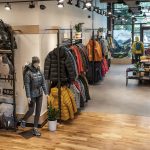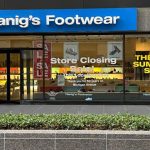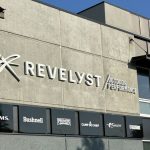Citing low interest rates and gains in consumer income, the National Retail Federation predicts a 5.6 percent gain in retail spending this year.
“Real consumer spending will continue to trend higher,” NRF economist Rosalind Wells said at a press conference Monday at the trade group’s annual convention.
Wells said that when U.S. Commerce Department figures for December are released Tuesday, they will bear out the NRF’s prediction for a 3 percent gain in retail sales for the 2002 holiday shopping season.
“Im not willing to concede that sales were as weak as some predicted,” Wells said.
Wells and others who spoke at the convention Monday said price deflation, particularly in apparel, brought down sales totals for the Christmas season, despite higher unit sales.
Walter Loeb, a retired equity analyst who now runs a retail consulting firm in New York, put the deflation factor at between 2 percent and 2.5 percent.
“I am looking for the deflation factor in 2003 to be less,” Loeb said.
Loeb predicted a gain in retail sales of 8 percent in 2003, along with a 3 percent gain in same-store sales. The latter is a measure of sales for stores open at least a year, against the same period in the prior year. It is considered by the industry to be one of the best measures of a retailer’s performance.
Boring clothing styles and a lack of innovation were blamed by numerous speakers as a reason for lackluster sales during the holidays.
“Apparel has become boring,” said Richard Jaffe, an analyst with UBS Warburg. “It’s the same old tried and true.”
Angela Selden, who is the managing partner of Accenture’s North American Products Consumer & Industrial West client group, said her firm’s research showed that consumers were willing to spend money if they are offered fresh and appealing merchandise.
People who were interviewed last summer said, “We dont see freshness. There was little compelling reason to buy,” she said.
Selden said the sluggish economy caused retailers to hold back instead of making investments in product development and innovation.
At the same time, Selden said, Wall Street was rewarding innovation. She named Williams Sonoma as a retailer that continuously delivers innovation, with 80 percent of product developed internally. More than half of the high end home product chain’s $4 billion market cap is a premium paid by investors for future expectations, she said.
The NRF’s Wells and Diane Swonk, chief economist for Bank One in Chicago, said they expect corporations to step up capital expenditures and spur economic growth in 2003.
But the uncertain geopolitical situation, with fears of impending war with Iraq and additional terrorist attacks, could hold back the recovery in 2003, the economists said.
“I call it Iraqnaphobia,” Swonk said.
Wells said the anticipation and uncertainty about a war likely was worse for the economy than a war itself would be.
“I hate to say it,” Wells said, “But if were going to war, get it over with.”
Unemployment is another concern for 2003, Wells said.
“We need to see improvement in the job market in 03,” she said.















